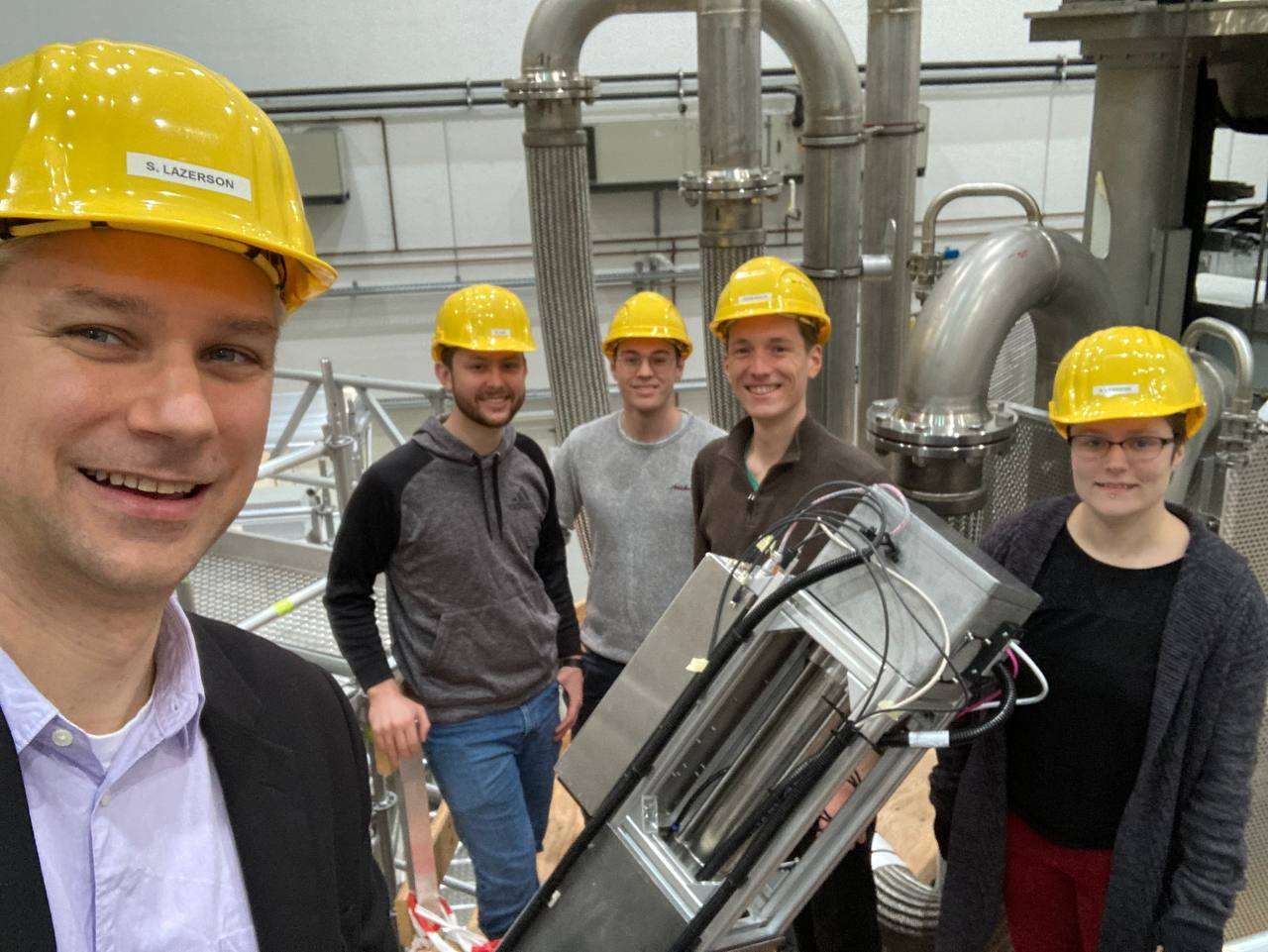From January to July of this year, I had the privilege of doing my graduation project at the Max Planck Institute of Plasma Physics (IPP) in Greifswald, Germany. In collaboration with the W7-X team, I investigated how electrical currents evolve in stellarators.
Electrical currents in plasmas distort the magnetic configuration: depending on the type of symmetry of the device, the magnetic field may become more or less helical ("twisty"). This has consequences for devices that possess island divertor systems (such as W7-X!), where the naturally appearing magnetic islands in the plasma edge are used to divert heat and particle loads to the appropriate plasma-facing components. Currents lead to a movement or distortion of these islands and hence affect the performance of such a divertor. It is therefore necessary to understand how these currents evolve in time so that we can predict whether action needs to be taken (e.g. current drive) to ensure that the divertor performs at the required level.
With this context in mind, I started my project. One tool that would be particularly beneficial in this research was the THRIFT code, which promised to be capable of simulating the evolution of currents for general 3D magnetic configurations. Unfortunately, THRIFT was in dire need of a rewrite for it to be of practical use for this project. I therefore had to brush up my knowledge of plasma physics and flux coordinate systems and simultaneously went to great lengths (googled) to consult the ancient tomes (FORTRAN manual) and reimplement the governing equations.
Halfway through the project, THRIFT was showing signs of life, but it was only by the beginning of June that the code finally started to give some sensible results. After THRIFT was confirmed to pass the initial checks, we looked at a few discharges at W7-X and found that THRIFT also reproduced the time behavior of the current with good agreement! We also investigated how this behavior would change according to THRIFT if we modified any of the relevant plasma parameters (density, temperature, effective charge), and here the results qualitatively agreed with our expectations. Finally, we looked at a few current drive scenarios with ECCD in W7-X, where we recreated some phenomena that had already been observed in experiment. Overall, though there were a few bumps on the way, this topic was a joy to work on and I'm happy how everything turned out.
The experience of living abroad was also a positive one. IPP offered me a place to live in its guesthouse, which is only a 10-15 minute walk or 5-minute bike ride from work. I made many new friends during the W7-X operational campaign, and most of them also stayed in the guesthouse, making it a popular destination for social events. There are plenty of things to do in the city center as well, which isn't far from the guesthouse either.
I'm very glad I took the opportunity to do my graduation project abroad and I recommend others to work with IPP as well. I'd like to return to doing research at IPP someday. I'm also very grateful for FuseNet, whose funding has helped ease the cost of moving to and living in Germany.
P.S. Greifswald has a petting zoo. If you ever find yourself there, go visit it.

